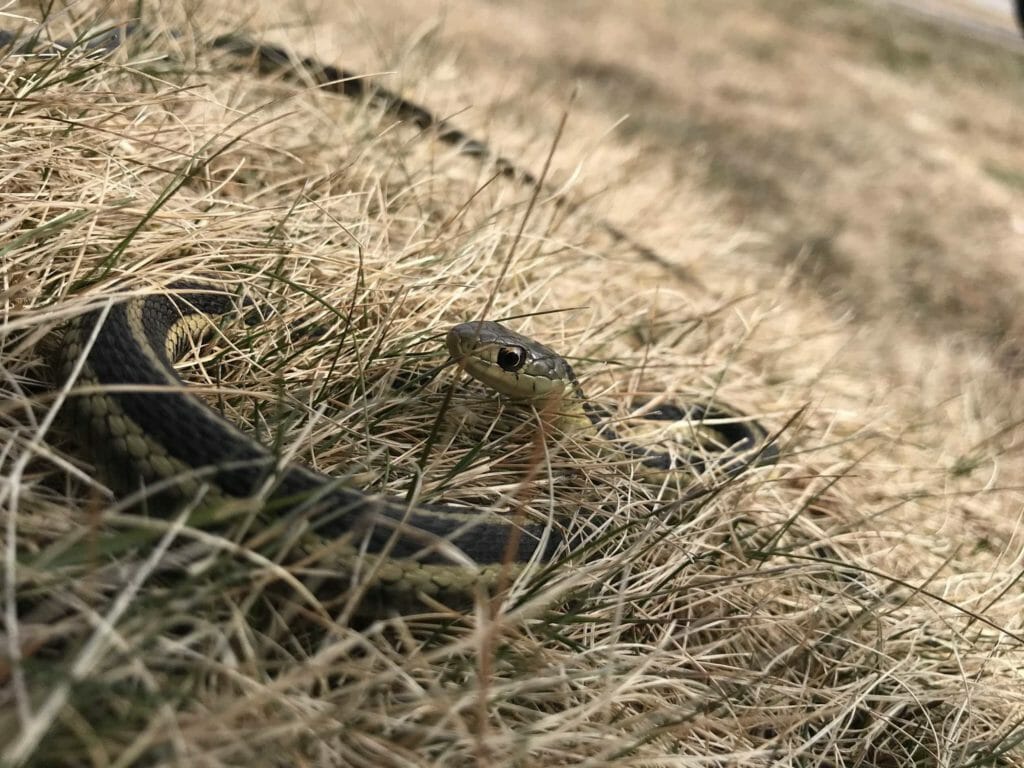In the event you’re a forest wanderer like me, I’ll invite you to a secret Wisconsin club. We scour the woods, seeking out the things that slither and hiss. Here there be snakes, and if you’re willing to bring along a camera and a sense of adventure, spring in Wisconsin offers a unique opportunity to observe native serpent species.
As the April mercury steadily climbs in Wisconsin, the outdoor activity picks up. Like bears blinking sleepily from winter dens, the good people from the Badger State begin to venture outside amongst the outdoors when the south wind blows warm. The sun shines, trails de-ice rapidly, the winter gear is packed in rubbermaid, and the weather app screams supportive nurturing advice. It’s time to head outside.
Spring Snake Behavior
Snakes leave their winter haunts in the warming spring temps to bask in all available sun. This leads to high visibility spots on top of logs, rocks, and trails for easy access and observation. In a generalized list ranging from rookie class to veteran expert snake hunter, I offer six Wisconsin species. There’s plenty more out there, twenty-one total native snakes to be exact, but the following is the VIP list of who’s who in the Wisconsin forked-tongue world.
Garter Snake
The Garter Snake is abundant in Wisconsin woods. In low forests next to water, it’s pretty easy indeed to cross paths with this striped frog hunter. Check transition zones from woods to swamp. If you come across a whole mess of them basking together, odds are you’ve found a winter hibernation spot. Garters shack up together over the cold winter months, and exit their ground burrows en masse when the ground starts to thaw. They return to these burrows every year, so once you’ve found the spot, you can return and observe them each spring.
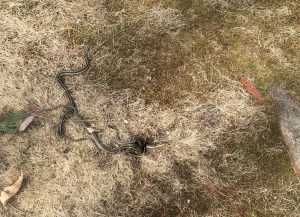
Garters are fairly easy to catch and mostly handleable, but a few will be feisty. Bites range from a tickle to a pretty good wallop from the larger specimens. Garters don’t often constrict prey, so they rely on lots of needle teeth to hang on to frogs until they can swallow them.
Eastern Hognose
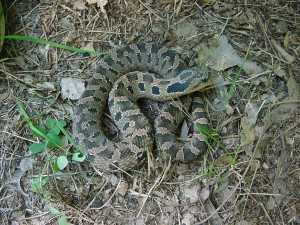
Snake hunters lucky enough to spot an Eastern Hognose are in for a treat. This snake is a classically trained actor and will put on a play in three parts. Act 1 involves rearing up and spreading it’s ribs to appear larger, and striking out viciously. Don’t be fooled, the strikes are with the mouth closed, and rarely does this snake become aggressive enough to bite for real.
Act 2 is the death scene. The Eastern Hognose will suddenly go into convulsions, gasp, and pitch itself face first in the dirt, rolling onto its back. You can flip it right side up, and the snake, unwilling to break character, will flip itself back over, sometimes even hanging its tongue from the corner of the mouth.
Death is but a doorway, as Act 3 involves the snake suddenly springing back to life, and hightailing it for the bushes with escape on its mind.
These snakes are not common, but if you spend enough time hiking in dry pine forests, you’ll find them. Main prey source for the Hognose are toads, so if you can find the food, you can find the snake. The best spots are stands of red and white pine close to marshy areas or slow moving creeks.
Fox Snake
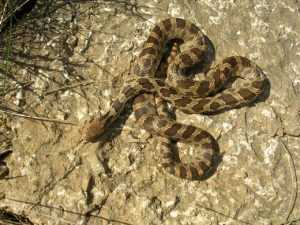
This large species is often calm and complacent, but the four to six foot size can be daunting. They will occasionally bite, and it can be a painful experience. Observe from a distance if you’re not comfortable wrangling a larger specimen. They are experts in camouflage, all but disappearing into leaf litter and rock piles. This snake is pretty common across Wisconsin, but is fairly shy and usually doesn’t leave good cover far behind.
You’ll probably have to do a little bushwhacking off the beaten path to find them. Check rocks surrounded by brush, as the snake will bask on the warm rocks, and slither quickly to the bushes if disturbed.
Common Water Snake
This fan favorite is a real nasty character. A large head full of sharp teeth and a heavy body means this water-bound reptile is all business. Grabbing this snake without a good plan in mind can lead to multiple damaging bites. Handle with care. Common Water snakes are usually found on rivers and lakes with rocky shorelines. This strong swimmer soaks up sun on the boulders along the shore, and escape into the water if possible. If escape is not an option, the Common Water snake will simply bite until there’s nothing still silly enough to hang around and get bit some more.
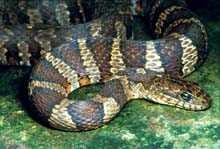
The aggression is certainly something to witness, but it’s best to be the one holding the camera and your friend holding (or trying to hold) the snake. They are non-venomous, but are often mistaken for the dangerous cottonmouth, which lives nowhere near Wisconsin, and foolishly killed on sight. Remember that only two venomous species exist in Wisconsin, and they both have rattles on the end of their tails. Water snakes are just mean and ornery, not deadly. Allow them to return to the water in peace.
Milk Snake
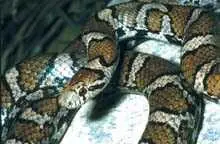
The grey ghost is a quiet and unassuming snake found under rocks, logs and leaf litter. Milk snakes are generally near tame, and can be picked up and handled easily. The problem is finding them. As a side note, and if you’ll pardon the interruption, I have spent countless hours searching for snakes. I have never come across a milk snake in Wisconsin. I’ve seen one real picture, and met exactly two people that have (one is my very lucky neighbor).
Perhaps the geography of my home base in Central Wisconsin has something to do with it, but Milk Snakes are not common, and are experts in staying hidden. This leads to a rare find and lucky indeed is the forest wanderer that can lay claim to observing one in the wild.
Timber Rattlesnake
This venomous reptile has the obvious do not handle under any circumstances tag. Observe from a distance of at least enough feet to escape safely. The Timber Rattlesnake is a very rare animal, and will escape as a first resort. Most get a glimpse of this snake moving across boulders or trails in high dry rocky country.
Timbers lie in wait for forest rodents to cross their path, and bite with the speed of a Ferrari. Hinged fangs swing out and up, and a potent hemotoxin is pumped into the unfortunate victim. Hemotoxin is a destructive venom, and the receiving end of a bite can expect searing, mind numbing pain. Permanent damage to joints and soft tissue near the bite is likely, and death (although extremely rare) is a possibility.
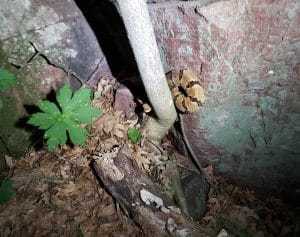
Bites to people occur about every three years in Wisconsin, so you’re much more likely to win a bunch of money on a scratch-off lottery ticket. However, folks that frequent rocky dry forests that house a good population of mice, squirrels and rabbits should take precautions and be vigilant, especially at night.
Protect the Resource!
Snakes are a vital part of the thriving natural beauty and biodiversity of Wisconsin. If you decide to handle any of the snakes you seek out, treat the animal with respect and caution. Take a few good pictures, enjoy the moment of discovery, and allow the snake to move on about its business. Enjoy the wildlife, but make sure others after you can do the same!
Follow For More!
Follow me on Twitter @AaronKatzmarek and follow @WiscoHeroics1 for more great sports and outdoor content! To read more of our articles and keep up to date on the latest in Wisconsin Sports, click here!




